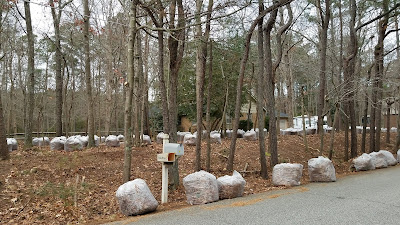Readers of my blog know I am a liberal, I attend a liberal church and most of my friends on my social networking sites are liberal. A lot of those friends (or acquaintances) are very vocal and my wife and I joke sometimes that at times the stuff they post on their walls must be fake news. I tend the shy away from expressing myself too strongly on my walls, or even here on my blog. For a lot of my friends the sky is falling. For me the glass is still half full, but as I mentioned in my blog, we need to be vigilant. I am an environmentalist, a forest bather, and a lover of water. As someone who has lived in Africa, Asia and the Middle East in countries ruled by dictators, I have seen what could happen if the press gets censored by demagogues. My father fought the Nazis and had PTSD for life. We need to protect what we have! So be it!
So how was 2017. Hey, I grew older. At work I taught more than 55 odd workshops during the past year. That is more than one a week on average. I usually do two per week, which means I was on the road, teaching somewhere almost every other week. I really enjoy teaching, so it is OK. A male colleague once told me that a successful day of teaching is like having good sex: "you are exhausted after it, but you feel oh-so satisfied." The growing older comes in with the recovery time after a day of solo teaching and traveling, it takes a lot longer. A perk is all the hotel points that I am accumulating, that is a nice fringe benefit. So be it!
2018 does not look much different. More teaching, but first getting used to cubicle life. My office moved and I am going from an office with a door into a cubicle. Which is why I got headphones, Amazon Prime music and Google Music to drown them all out. But I get a desk that can be turned into a standing desk with a switch, and we learned last year that sitting is the new smoking. The new location will also impact my lunch walks, but I'll adapt, so be it!
Environmentally we have taking a few steps back this past year. But that is only as a country. I learned that other countries are trying to step up to compensate for our regression. I also know that a lot of individuals are stepping up to the plate. I for one learned about forest bathing, and if you want to experience that then you'll have to be spiritual but also environmental. In 2016 I championed the term "Nature Deficit Disorder." This term encompasses forest bathing, or one way to address the disorder is by getting out there in nature. We just need to take care of our little piece of nature since our elected government does want to do it right now. All I can do is try to learn and grow. So be it!
On the subject of learning. I discovered a great website. Aeon.co is a great site with essays about a variety of subjects and even some short video presentations. I find in refreshing and fun. I am also listening to a fair number of podcasts. I know I am scratching the surface here, but it is a great learning experience. So much better than television or radio. I particularly enjoy: The Hidden Brain and Reply All. For the rest my Kindle App is a godsend, I read and write. I will never stop learning and that will hold true for 2018. So be it!
I have also really gotten back into my bonsai trees. Some of them are almost 30 years old and have been ignored for some time. Getting back into it has been really relaxing for me and it does wonders for my brain. However, I hate to report that I have not sailed or biked enough. There is just not enough time in the weekend to get all my hobbies in and mow the lawn. I live a full life, I hardly have time to watch TV. So be it!
Even politically things are looking up. I think people are seeing and understanding that civility is important in public discourse. After a year of twitter barrages many of the voters are saying enough is enough. I don't care if it is left or right, what I would like to see is compromise and dialogue. If we need to do that through the ballot box in 2018, so be it!
Finally, at home. We celebrated our 40th wedding anniversary this year with a trip to Newfoundland. I wrote a few posts about it in late June and July. Celebrating those achievements and our friends will be an important item in the future. That is what will keep us young and alive. So be it!
 |
| I do not often show pictures of me and my family on my blog, but this is the happy 40-year married couple at the terracotta warrior exhibit in Richmond this week. |










